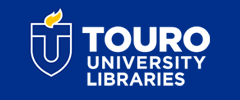NYMC Faculty Publications
Aortopathy: Effects of Lipid-Lowering Therapy
Author Type(s)
Resident/Fellow, Faculty
DOI
10.1097/CRD.0000000000000586
Journal Title
Cardiology in Review
First Page
82
Last Page
87
Document Type
Article
Publication Date
1-1-2025
Department
Medicine
Keywords
abdominal aortic aneurysm, aortopathy, degenerative aortic stenosis, dyslipidemia, lipid-lowering therapy, statin, statins
Disciplines
Medicine and Health Sciences
Abstract
Aortopathies can be congenital or acquired. Aortic atherosclerosis, abdominal aortic aneurysm, and degenerative aortic stenosis are some of the major manifestations of acquired aortopathy. Dyslipidemia, an imbalance of plasma lipid levels, is strongly associated with common aortopathies. A relationship between abdominal aortic aneurysm, degenerative aortic stenosis, and dyslipidemia has been identified in the literature but finding effective preventive strategies has been challenging. Nevertheless, lipid-lowering therapy remains a mainstay of both treatment and prevention. In patients with aortic atheroma, statins were found to be protective through the review of this study. There is currently no place for statins in the treatment or prevention of disease progression in patients with calcific aortic stenosis. Their low cost, widespread availability, and strong safety profile tip the risk-to-benefit ratio toward statins for abdominal aortic aneurysms but more research is needed. A review of proprotein convertase subtilisin/kexin type 9 inhibitors may yield similar benefits for all aortopathy patients; however, those results are not yet available.
Recommended Citation
Vollaro, M., Sharma, T., Sharma, M., Frishman, W., & Aronow, W. (2025). Aortopathy: Effects of Lipid-Lowering Therapy. Cardiology in Review, 33 (1), 82-87. https://doi.org/10.1097/CRD.0000000000000586


